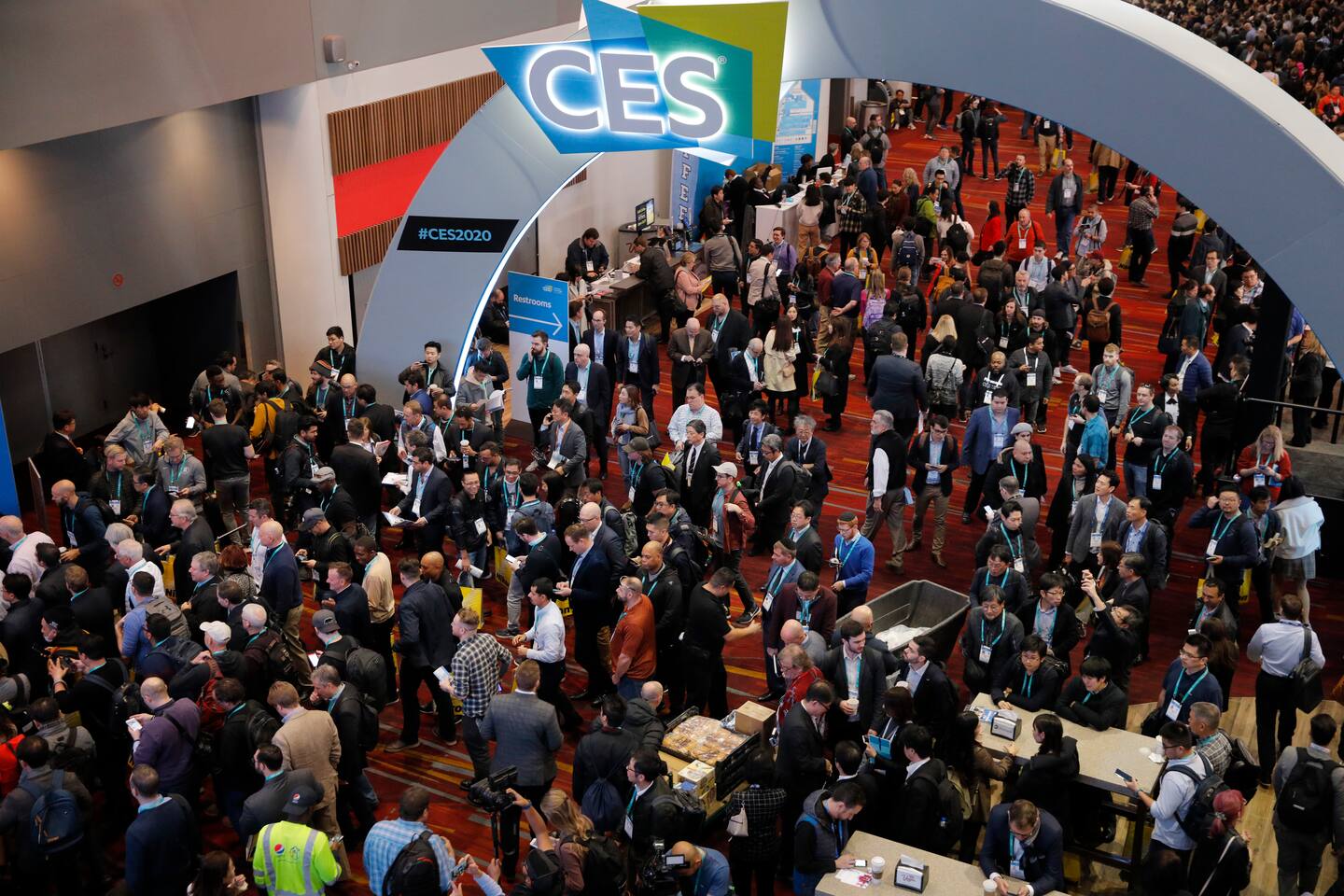CES 2021 is still happening — without Vegas, crowds, prototypes or germs

Hosted by the Consumer Technology Association, CES (the letters used to stand for Consumer Electronics Show but now are just its name, like Steve) is a massive in-person networking event. It typically attracts more than 100,000 attendees. Last year, it was spread across 2.9 million square feet of exhibit space. People who come are there for meetings, demos, deals and parties.
Already known for being a riot of germs that leave many a conference-goer sick, the conference has canceled any in-person events this year because of the pandemic. Instead of just shelving the conference for a year or two until coronavirus vaccines have been widely distributed, it is forging ahead with a virtual conference that starts Monday.
Things were not perfect for CES before the pandemic. It always seemed to wrestle with one PR crisis a year, whether it was the proliferation of “booth babes,” not having enough female speakers or rejecting sex tech. (It made amends for that one last year when it officially embraced sex toys.)
It’s not just CES. These types of conferences, such as COMDEX and MacWorld Expo or the still-going Mobile World Conference, were once where big companies came to launch their new products. But the major tech companies have been drifting away for years, choosing to hold their own glitzy product announcements without needing to compete for attention. Steve Jobs likely started the trend. Apple used to unveil Apple’s latest products at the annual MacWorld Expo conference, where he gave his patented sales pitch onstage. But then in 2009, Jobs pulled Apple out and the company started making its announcements at its own marquee events.
That division is even starker this year. While they don’t typically announce major products at CES, the biggest tech companies like Google and Amazon have still made their existence and support known with gimmicky ads and displays for their smart assistants. In 2020, Google set up giant colorful slides in the Las Vegas Convention Center Parking Lot. The year before, Apple bought one ad on the side of a building to brag about its privacy practices, but had no big presence on the show floor.
In the past, the move away from big companies has let more interesting parts of CES flourish. Scheduled events and big names were no longer the draw and start-ups and midsized companies could get more attention.
The in-person conference can be fun, frenetic and corny. It’s filled with entertaining gizmos and products that will never catch on but are fun to see, such as butler robots and manicure machines. (Or video streaming service Quibi, which launched at CES in January 2020 and shut down in October 2020.) Many of the booths on the conference center floors are filler unless you’re in the industry — aisles of surveillance cameras and headphones and wearables. Some of the biggest stars of CES are ridiculous TVs too large to fit through any normal person’s front door, and groan-worthy publicity stunts such as the toilet paper robot. In recent years, it has added more car-companies — something that doesn’t translate to online.
Mostly you walk and walk, snaking past the big and small booths that companies have set up to promote their real or future tech products, finding hidden gems and striking up conversations with smart strangers you run into.
It’s difficult to translate much of that to a digital event. So far, this year’s CES appears to be a bunch of news releases, live-streamed announcements at odd hours, Zoom panels and video “experiences,” all coordinated to come out the same few weeks. There are new products, but finding them is different and proving they exist and work difficult. Tech companies that usually pay thousands for a patch of floor space now pay between $1,200 and $85,000 to be exhibitors at the all-digital conference. That includes a listing in the CES directory and, depending on the cost, inclusion in official events and branding.
Some companies, perhaps believing there’s no reason to pay someone to help you post things online, are going rogue and making their own announcements at the same time. But that is against the rules for CTA members.
“I think the normal energy and excitement is going to be muted because we’re physically not there,” said Tuong Nguyen, a senior principal analyst at Gartner.
Nguyen estimates he has attended CES more than six but less than 12 times. (“It’s really hard to remember after a certain point.”) He says for many people in the industry, the biggest draw of the event is being in the same place as so many other people so you can network. For exhibitors, it’s a way to be discovered and find vendors willing to carry your products. For tech enthusiasts who roam the floors with their overflowing bags of swag, it’s a place to be wowed and test out innovations before anyone else. For reporters, it’s a chance to crash extremely expensive prototype wheelchairs and get temporary tattoos of their bosses.
CTA organizers say they’re attempting to recreate some of that feel in its digital-only incarnation.
“We’re trying to take some of the serendipity that happens during the in-person CES — that chance encounter with a new partner or an innovative product you see while walking the show floor — and bringing it to the digital venue,” says Gary Shapiro, president and chief executive of CTA.






